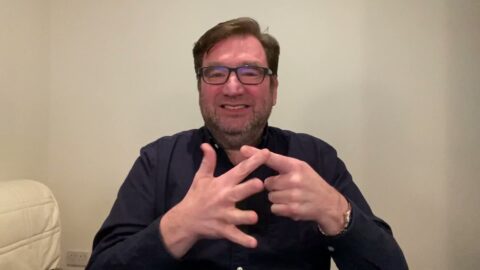This three year joint research project is led in the UK by Sujit Sahasrabudhe (Research Associate) and Dr Robert Adam (Principal Investigator), in collaboration with colleagues at the National Institute of Informatics in Japan. This project commenced in March 2022 and is focused on investigating the impact of video conferencing use during the Covid-19 pandemic on how deaf people sign. The focus of the project is British Sign Language (BSL) and Japanese Sign Language (JSL). The two sign languages have their own distinctive features, for example different fingerspelling systems and different handshapes for the same kind of depicting signs (ie classifier signs) and different ways of incorporating iconicity.
We study how deaf people’s BSL/JSL variations are affected by video conferencing in the UK and Japan, in the following way:
- One hundred deaf people will be surveyed through the use of a questionnaire about their language attitudes pre-, during and post-pandemic.
- Ten deaf people in the UK of varying backgrounds (race, gender, age and gender) will meet online and their conversations will be recorded for analysis of their signing styles.
- These ten deaf people will meet with deaf people from Japan online via video conferencing online.
- We will look at how these deaf people sign to each other. With a focus on cross-signing and translanguaging, we will use conversation analysis (CA) to look at the data. We will look at how deaf people in Britain and in Japan accommodate each other during these dialogues in order to understand their conversation partners.
- All video recorded data from the dialogues will make up a corpus of cross-signing, which will subsequently be used for machine learning of sign languages (or artificial intelligence) so computers can be used to detect sign movements and handshapes in a subsequent project.




